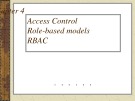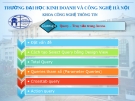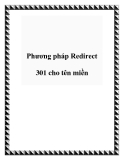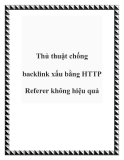
MANDATORY ACCESS CONTROLS
Faculty of Computer Science &
Engineering
HCMC University of Technology
Information Systems of Technology
1

Introduction to Mandatory Access Control
MAC in Oracle: Oracle Label Security
OUTLINE
2

Security Classes
MAC properties
Multilevel relation
Pros and cons of MAC
INTRODUCTION TO MAC
3

INTRODUCTION TO MAC
Mandatory Access Control (MAC):
MAC applies to large amounts of information requiring
strong protect in environments where both the system
data and users can be classified clearly.
MAC is a mechanism for enforcing multiple level of
security.
Propose Model: Bell-LaPadula
4

SECURITY CLASSES
Classifies subjects and objects based on security
classes.
Security class:
Classification level
Category
Category
A subject classification reflects the degree of trust
and the application area.
A object classification reflects the sensitivity of
the information.
5





![Quản trị tài khoản và nhóm người dùng: Chương 4 [Hướng dẫn chi tiết]](https://cdn.tailieu.vn/images/document/thumbnail/2013/20130828/hoaanhdaoak/135x160/3671377664767.jpg)











![Sổ tay Kỹ năng nhận diện & phòng chống lừa đảo trực tuyến [Mới nhất]](https://cdn.tailieu.vn/images/document/thumbnail/2025/20251017/kimphuong1001/135x160/8271760665726.jpg)
![Cẩm nang An toàn trực tuyến [Mới nhất]](https://cdn.tailieu.vn/images/document/thumbnail/2025/20251017/kimphuong1001/135x160/8031760666413.jpg)







